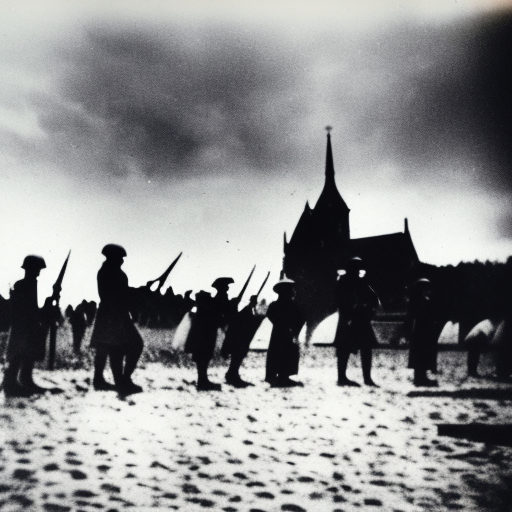Battle of France: The Fall of France in World War II
The Battle of France, also known as the Fall of France, was a major military campaign that took place during World War II. It occurred from May 10 to June 25, 1940, and resulted in the German invasion and occupation of France. The battle marked a significant turning point in the war and led to the establishment of the Vichy government in France.
Background:
In 1939, Germany invaded Poland, which triggered the start of World War II. France and Britain, as allies of Poland, declared war on Germany. However, for the next several months, there was a period of relative calm known as the “Phoney War” as both sides prepared for a major conflict. In April 1940, Germany launched a surprise attack on Denmark and Norway, followed by an invasion of the Netherlands and Belgium.
The German Blitzkrieg:
The German invasion of France began on May 10, 1940, with a massive assault known as the Blitzkrieg. The German military employed a new tactic that combined armored vehicles, air support, and rapid infantry movements to quickly overwhelm their opponents. This strategy caught the French and British forces off guard and allowed the Germans to make rapid advances.
The Maginot Line:
The French had constructed the Maginot Line, a series of fortifications along their border with Germany, in the 1930s. However, the Germans bypassed this defensive line by launching their attack through the Ardennes Forest, a heavily wooded area that was considered impassable for tanks. The French had not fortified this area, believing it to be a natural barrier. The German forces successfully broke through the Ardennes and outflanked the Maginot Line.
Evacuation of Dunkirk:
As the German forces advanced, the British Expeditionary Force and elements of the French army found themselves trapped on the beaches of Dunkirk. In what became known as the “Miracle of Dunkirk,” a massive evacuation operation was carried out to rescue these troops. Over the course of nine days, hundreds of civilian boats, along with naval vessels, successfully evacuated over 338,000 soldiers to Britain.
French Surrender:
Despite the successful evacuation at Dunkirk, the situation in France continued to deteriorate. The French government, facing the prospect of total defeat, began negotiations with the Germans. On June 22, 1940, an armistice was signed, effectively ending the Battle of France. Under the terms of the armistice, Germany occupied northern and western France, while a collaborationist government, known as the Vichy government, was established in the south.
Significance:
The Battle of France had far-reaching consequences for the course of World War II. It demonstrated the effectiveness of the German Blitzkrieg strategy and highlighted the weaknesses in French and British military planning. The fall of France also allowed Germany to consolidate its control over Western Europe and freed up resources for the planned invasion of the Soviet Union.
Conclusion:
The Battle of France was a decisive military campaign that resulted in the German occupation of France and the establishment of the Vichy government. It marked a significant turning point in World War II and highlighted the effectiveness of the German Blitzkrieg strategy. The battle also exposed the weaknesses in French and British military planning and set the stage for further German aggression in Europe.












